Buyer's Guide: The Best All-Season Tires You Can Buy

As their name suggests, all-season tires are designed to be used all-year round. These tires normally feature a quiet ride with good tread life and are often outfitted on vehicles straight from the factory. They basically combine the benefits of summer and winter tires, but there are some compromises, as you can imagine. All-season tires won’t provide the same sharping handling and aggressive grip that a summer tire offers, nor will it handle extreme weather conditions like heavy snow or ice that a dedicated winter tire will. What they will do, however, is provide versatile performance in a variety of weather conditions, including rain and light snow. Essentially, all-season tires are ideal for car owners who don’t experience extreme weather conditions such as heavy snow, ice, or cold in the winter months.
Typically when shopping for all-season tires, they’re broken down into several categories. You can find out more about each category by referring to our table of contents. In this article, we’ll take a look at the best all-season tires for each category.
Table of contents
- 1. Editor's Pick: Michelin Pilot Sport A/S 3+
- 2. Sumitomo HTR A/S P02
- 3. BFGoodrich Radial T/A Spec
- 4. Goodyear Assurance WeatherReady
- 5. Michelin Defender T+H
- Different Types of All-Season Tires
- How to Rotate Your Tires and Why By Kshitij Sharma
- Directional vs Non-directional
- Non-directional tires
- Directional and High-performance tires
- Our Final Verdict
1. Editor's Pick: Michelin Pilot Sport A/S 3+
The Michelin Pilot Sport A/S 3+ is one of the most popular and highest-rated all-season tires for passenger cars. This tire also offers a W- and Y-speed rated Ultra High Performance All-Season variant, ideal for high-end sports cars, as well as sporty coupes and sedans looking for maximum performance. Expect to get Michelin's highest level of ultra-high all-season performance with the Michelin Pilot Sport A/S 3+, with an emphasis on dry road handling and wet road grip with balanced all-season traction for occasional light snow.
This tire replaces the Michelin Pilot Sport A/S 3, sharing the same performance-oriented tread pattern while featuring a new and advanced Helio+ tread compound for increased light-snow traction. According to Michelin, the Helio+ Technology utilizes sunflower oil and Extreme Silica Technology in the tread compound to increase traction at low temperatures and on wet roads. This tire is designed to provide high levels of lateral grip and as much dry cornering capability as some competitors' summer performance tires. In addition, wide circumferential grooves help resist hydroplaning, increasing wet traction and grip in standing water.
Pros | Rides and handles well, good grip, good wet weather performance |
Cons | Hard compound, sensitive to bumps, loud road noise compared to some tires |
Bottom Line | Editor's Pick for Best All-Season Tire |
2. Sumitomo HTR A/S P02
If you're looking for a high-performance all-season tire, Sumitomo Tires' HTR A/S P02 includes H- and V-speed rated models designed for sports cars, sporty coupes, and performance sedans. This tire provides year-round dry and wet road performance, along with all-season winter time traction. By using high-tech materials and manufacturing methods, Sumitomo has managed to mix high performance with all-season traction, even in light snow. It features a silica-enhanced tread compound that has been molded into an asymmetric pattern to promote wet traction and even wear.
Other features of the Sumitomo HTR A/S P02 include notched shoulder blocks backed by outboard circumferential ribs to enhance dry road cornering and stability. Helping reduce the risk of hydroplaning and enhancing wet traction are water evacuation channels and high-angle lateral grooves. Even in wintry conditions these tires can perform, thanks to wide-angle central tread slots and strategically placed 3D sipes, which provide additional biting edges.
The internal structure of this tire sports two rigid steel belts, which have been reinforced by full width Jointless Nylon Band (JNB) technology. JNB features spirally wound reinforcement for long-term, high-speed integrity. It also assists in reducing the weight of the tire and promoting more uniform ride quality. Helping provide uniform wheel fit for responsive handling is a high-tension polyester casing with high ply turn-ups featuring an engineered bead package.
Pros | Price, smooth ride, crisp and precise performance |
Cons | Noisy, below average wet performance |
3. BFGoodrich Radial T/A Spec
When it comes to performance all-season tires, BFGoodrich's Radial T/A Spec is designed to deliver a combination of sporty appearance, predictable handling, and all-season performance including in light snow. This tire was developed for Original Equipment use on modern muscle cars, so you know it's designed to perform. It features an all-season compound that has been molded into a symmetric tread design, sporting a continuous center rib flanked by independent tread blocks in the intermediate ribs and shoulders.
The BFGoodrich Radial T/A Spec's internal structure has twin steel belts that have been reinforced by spirally wounded nylon on top of a polyester casing.
Pros | OEM tire, handle well, high treadwear, good handling and noise, great ride comfort |
Cons | "Acceptable" wet traction, poor light snow traction |
4. Goodyear Assurance WeatherReady
Own a family sedan, coupe, crossover, SUV, or minivan and looking for a smooth and quiet ride? Goodyear's Assurance WeatherReady is a grand touring all-season premium tire featuring a special soy-based rubber tread compound that has been molded into an asymmetric tread designed to provide traction in all weather conditions. This tire also sports Goodyear's Weather Reactive Technology, which helps deliver control in inclement weather, while 3D TredLock Technology Blades are in the center and outboard tread ribs to provide stable cornering in slippery conditions.
Other technologies include Evolving Traction Grooves, designed to help retain high levels of grip as the tire wears. There are also Sweeping Tread Grooves that help resist hydroplaning by pushing water away from the footprint to the four deep, circumferential channels. Added silica in the tread compound also assists traction on wet roads.
Zigzag Biting Edges can be found on the intermediate ribs, providing traction in slippery conditions, including on ice and in snow. This tire meets industry Severe Snow Service requirements and are branded with the three-peak snowflake (3PMSF) symbol.
The internal construction of the Goodyear Assurance WeatherReady tire uses a single-ply polyester casing with two wide steel belts supporting the tread area, while a polyamide reinforcement assists in handling response and high-speed capability.
Pros | Solid traction and stability, quiet, good performance in light snow |
Cons | Price, firm ride, noticeable bumps |
5. Michelin Defender T+H
A fantastic standard touring all-season tire is the Michelin Defender T+H. Designed for coupes, family sedans, minivans, and compact crossovers, this tire offers long-lasting performance with a comfortable drive, while delivering all-season traction in the dry, wet, and light snow. For the latest-generation Defender tire, Michelin used a new all-season tread compound with a focus on improving durability and longevity compared to the previous-generation model. There's an asymmetric pattern for smooth and quiet operation, featuring the company's IntelliSipe technology, which consists of zigzag sipes that interlock below the surface. As a result, tread block rigidity is increased and the tire's contact with the road is optimized.
This new-generation compound also has a high silica content that aids wet traction, along with lateral notches and circumferential grooves which effectively channel water away from the footprint, helping reduce the risk of hydroplaning. This tire also provides traction on slippery surfaces including light snow, thanks to independent tread blocks and the zigzag sipes that together create biting edges.
Consisting of two wide steel belts, the tire's internals are reinforced by a single ply of polyamide, stabilizing the tread while also improving steering response and tire life. Helping improve both durability and ride comfort is a two-ply body casing constructed by polyester cord.
Pros | Smooth, solid handling, good rain performance |
Cons | Soft, lacks steering response on some vehicles, rough ride, moderate noise |
Different Types of All-Season Tires
High Performance All-Season: These are low profile tires that are similar to ultra high performance tires. They feature tread designs and compounds that remain flexible in cold weather, offering year-round traction with good handling. Designed for sports coupes and sedans, high performance all-season tires will also offer light snow traction.
Performance All-Season: Also providing year-round traction, even in light snow, performance all-season tires are an upgrade for vehicles that originally came equipped with passenger all-season tires. These tires offer a mix of performance and appearance at a reasonable price.
Grand Touring All-Season: With a heavier focus on noise and ride comfort, grand touring all-season tires are designed to blend a performance tire's appearance with a passenger tire's smooth and quiet ride. These are often Original Equipment tires and offer better handling and high-speed capabilities when compared to standard touring all-season tires.
Standard Touring All-Season: Designed to blend a performance tire's appearance with a passenger tire's smooth and quiet ride, standard touring all-season tires are normally available in the lower speed ratings and higher aspect ratio sizes. These tires place more emphasis on ride comfort and treadwear when compared to grand touring all-season tires. They offer enhanced handling and treadwear, along with good noise and ride comfort.
Passenger All-Season: Dependable while offering good wear and ride comfort, passenger all-season tires deliver decent steering response and handling capabilities, although they won't match performance or touring tires. Along with good wear and a comfortable ride, these tires offer predictable handling all year round, including in light snow.
There are also three popular categories when it comes to all-season tires for crossovers, light trucks, and SUVs.
Street/Sport Truck All-Season: These tires feature a wide, low profile and large rim diameter fitments, enhancing a vehicle's looks and performance when replacing typical Original Equipment tires. Along with all-season versatility, these tires provide traction in light snow.
Crossover/SUV Touring All-Season: Offering a stylish appearance, sophisticated comfort, and all-season on-road traction for crossovers, SUVs, or pickup trucks are crossover/SUV touring all-season tires. Tires in this category combine the sporty appearance of street/sport truck all-season tires with the ride quality and noise comfort typically found on highway all-season tires. The result is a nice blend of fashion and function.
Highway All-Season: Lastly, highway all-season tires are designed for pleasing comfort, predictable handling, and all-season traction for crossovers, SUVs, or pickups. These tires normally have independent tread blocks and multiple sipes positioned around the tire, resulting in good on-road poise and traction in inclement weather.
How to Rotate Your Tires and Why By Kshitij Sharma
Tire rotation is an essential part of driving a car even though a lot of us tend to ignore this essential aspect. Tire rotation has many distinct advantages. It ensures uniform tread wear all around. This ensures that the tires last as long as they are supposed to. The uniform tread wear also ensures that the handling remains consistent and the tread depth remains uniform. Uneven tire wear can be disastrous, especially in low grip situations.
The tires of your car should ideally be rotated every 5000 miles or at every service interval. You can rotate your tires at home as well though you will need two jack stands so all four tires can move freely off the ground. Tire rotation also depends on the kind of car you have, whether its FWD, RWD, AWD or 4WD. Another factor to consider is the type of tire, if its directional or non-directional.
Directional vs Non-directional
To put your mind at ease, unless you have opted for a high-performance summer tire, the chances are you have a set of non-directional tires on your car.
The key difference between directional and non-directional tires is that directional tires are designed to rotate in a specific direction. And they will have an arrow specifying the direction on the outer sidewall. You can only swap them front to back and vice versa. Also, non-directional tires tend to last a lot longer than directional tires. There are three distinct ways to rotate non-directional tires and two ways to rotate directional ones.
Non-directional tires
Rearward Cross Swap
This tire rotation method is best suited for RWD, AWD and 4WD vehicles. According to this method, both rear tires go directly to the front while the front right goes to the left of the rear axle and the left front tire goes to the rear right.
In case you have a full-size spare, both rear tires go to the front as usual. But the rear right tire is replaced by the spare, the front right goes to rear left and the front left becomes the new spare.
X-pattern Swap
We recommend this method for FWD cars and especially light trucks. This is the simplest method in which the tires diagonally opposite to each other are swapped. So the rear right goes to front left and vice versa.
Forward Cross Swap
This is the most commonly used rotation method for FWD cars. According to this, you move the front tires to the rear and the rear right is swapped to the front left and the rear left is swapped with the front right tire.
If your car has a full-size spare, then the spare goes to the rear right position. The left front moves to rear left and the rear tires are swapped diagonally. The right front is now the new spare.
Directional and High-performance tires
Front to Back Swap
This method is for directional tires that are of the same size. Since they can move in one direction only, they are swapped front to back. The front left goes to rear left and the front right goes to rear right.
Side to Side Swap
This method is for especially high performance and luxury cars that tend to have different tire sizes front and rear. As the name suggests these tires are only swapped from the right side to the left side of the same axle.
Our Final Verdict
Recent Updates

Jason Siu began his career in automotive journalism in 2003 with Modified Magazine, a property previously held by VerticalScope. As the West Coast Editor, he played a pivotal role while also extending his expertise to Modified Luxury & Exotics and Modified Mustangs. Beyond his editorial work, Jason authored two notable Cartech books. His tenure at AutoGuide.com saw him immersed in the daily news cycle, yet his passion for hands-on evaluation led him to focus on testing and product reviews, offering well-rounded recommendations to AutoGuide readers. Currently, as the Content Director for VerticalScope, Jason spearheads the content strategy for an array of online publications, a role that has him at the helm of ensuring quality and consistency across the board.
More by Jason Siu

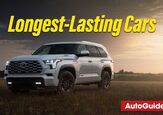

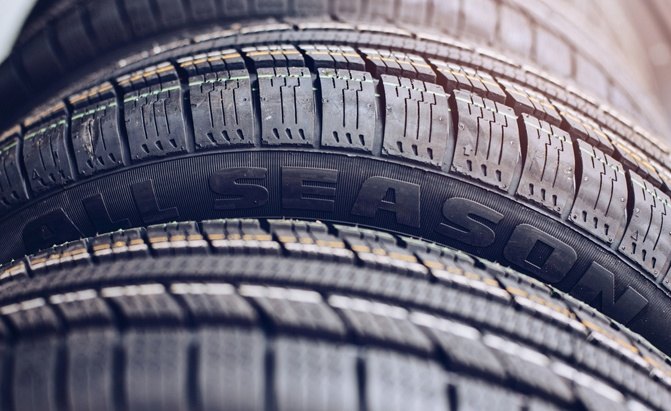
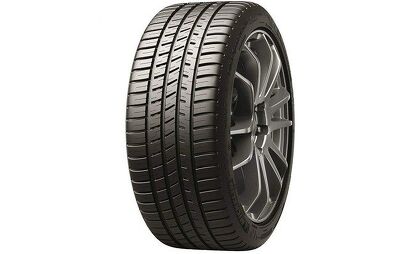

















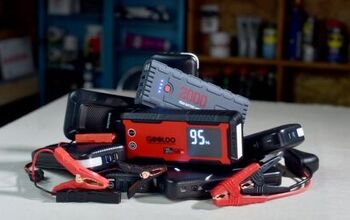
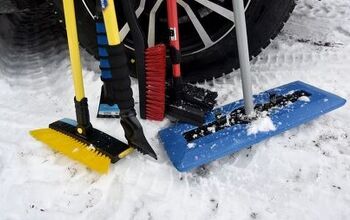

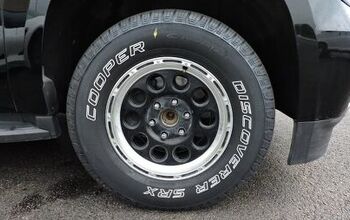
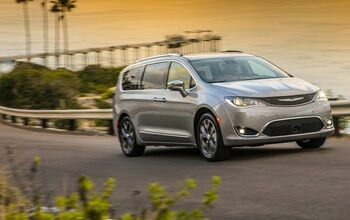
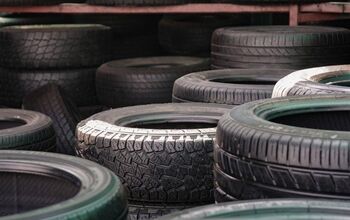












Comments
Join the conversation
is a vercelli struda1 tire as good as a michelin cross climate tire
I don't think that 'regular' all season tires should be compared to 3PMSF tires. While the difference in performance may be minimal in some cases, 3PMSF tires are legally required in many locales. If I want to travel south from my home, there is a mountain pass 75 km away where I can be ticketed for driving without 'snowflake' rated tires (in the winter months). So, there is little value in reading a comparison like this one where the Goodyear Assurance is the only tire that I can legally drive on. The other companies do make 3PMSF tires.